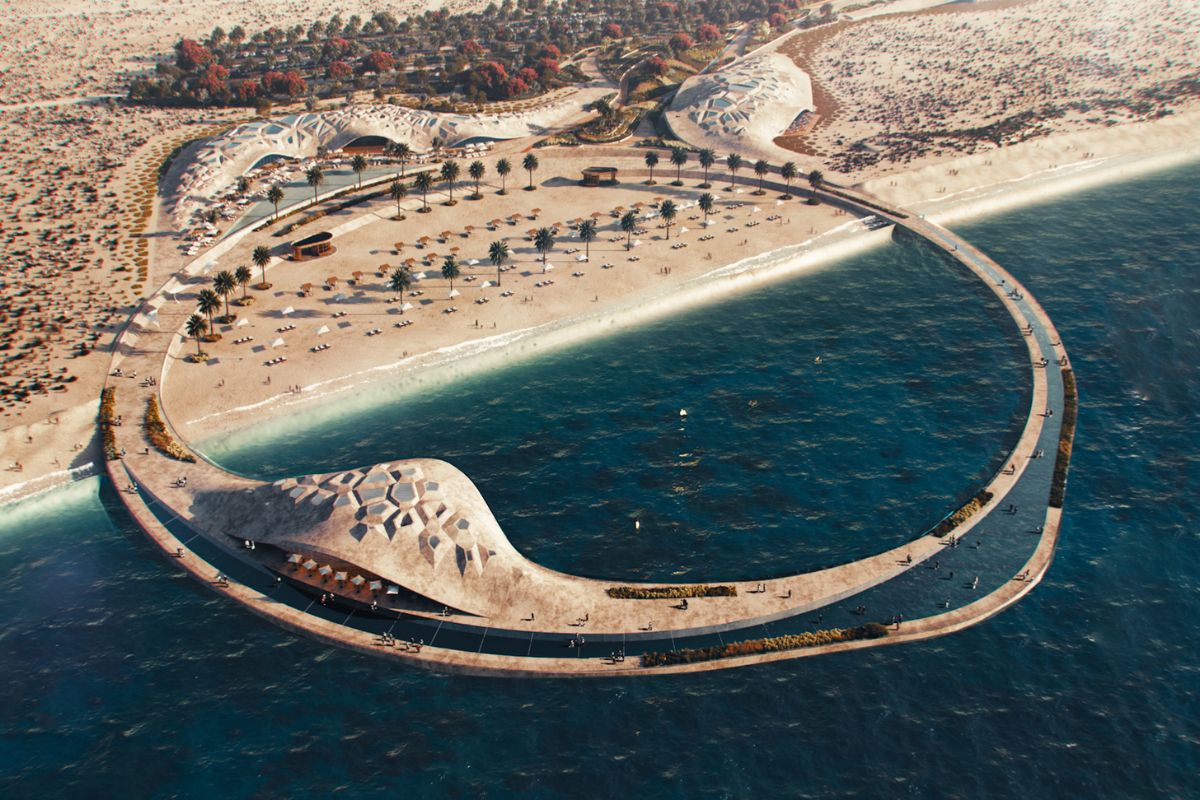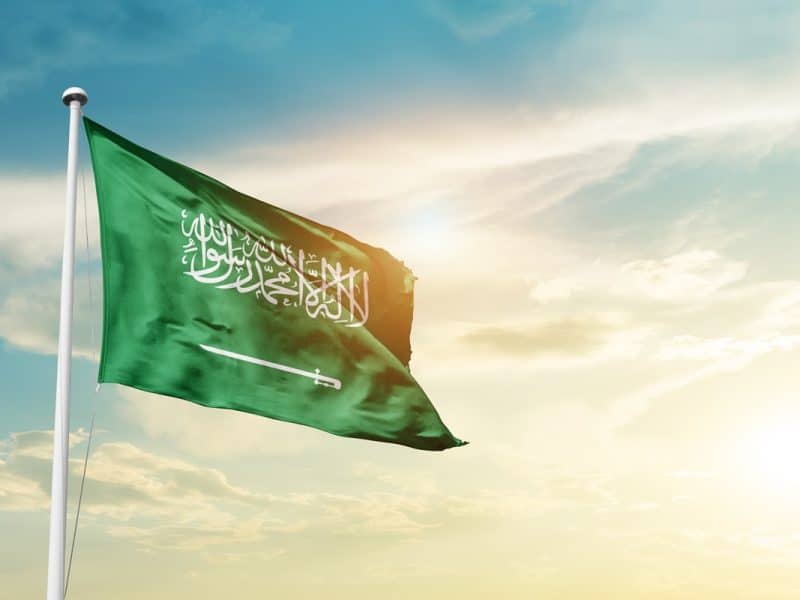Sheikh Hamdan bin Mohammed bin Rashid Al Maktoum, Crown Prince of Dubai and Chairman of The Executive Council has approved the master plan for the Jebel Ali Beach Development Project.
The 6.6 km beach is set to become a recreational destination with a focus on environmental preservation.
“As part of the Dubai 2040 Master Plan’s goal to develop and expand the emirate’s public beaches by 400 percent, we have approved the master plan and designs for the Jebel Ali Beach Development Project. The unique project spans 6.6 kilometres and covers a total area of 330 hectares. Dubai is committed to implementing pioneering projects that enhance quality of life and strengthen the city’s position as the world’s best place to live and work in,” Sheikh Hamdan said via X (formerly known as Twitter).
As part of the Dubai 2040 Master Plan’s goal to develop and expand the emirate’s public beaches by 400%, we have approved the master plan and designs for the Jebel Ali Beach Development Project. The unique project spans 6.6 kilometres and covers a total area of 330 hectares.… pic.twitter.com/XXs299OKnd
— Hamdan bin Mohammed (@HamdanMohammed) July 7, 2024
Dubai unveils ambitious 6.6 km Jebel Ali Beach Development Project
The development comes as part of a broader initiative to enhance Dubai’s urban experiences, as directed by Sheikh Mohammed bin Rashid Al Maktoum, Vice President and Prime Minister of the UAE and Ruler of Dubai.
The project aims to create a distinctive recreational destination that places a high priority on environmental preservation and the protection of local ecosystems and wildlife.
The Jebel Ali Beach Development Project is part of a comprehensive master plan to develop public beaches in the emirate.
This plan aims to increase the total length of beaches by an impressive 400 percent, involving the addition of new public beaches and the enhancement of existing ones.
These beaches will be equipped with new recreational, sports, aesthetic, and investment facilities, aligning with the vision set out in the Dubai 2040 Urban Master Plan.
New Dubai beach project to prioritise environmental conservation, recreation

“An open beach for the public and a site of global environmental importance, the Jebel Ali Beach Development Project is the first of its kind in the UAE. It is located within the Jebel Ali Wildlife Sanctuary, listed under the Ramsar Convention on Wetlands of International Importance,” Mattar Al Tayer, Commissioner General for Infrastructure, Urban Planning, and Well-Being Pillar said.
“The project aims to create a unique, attractive recreational beachfront with a strong emphasis on protecting the environment and supporting the emirate’s sustainability and eco-tourism goals. The beach’s development will ensure the preservation and enhancement of ecosystems and wildlife at the site, including enhancing turtle habitats and planting mangrove trees, which will contribute to blue carbon footprint growth and provide an open beach with minimal impact on ecological and biological systems,” he added.
The Jebel Ali Beach, set to become the longest public open beach in Dubai, will cover an area of 330 hectares, Al Tayer said.
The development plan includes two distinct areas: a 5-kilometre Sandy beach to be developed by Nakheel and a 1.6-kilometre Mangrove beach to be developed by Dubai Municipality.
This area is notable for its unique ecosystem, particularly due to the role of mangrove trees in enhancing the sanctuary’s ecosystem and providing habitats for numerous living organisms.
The project’s design prioritises optimal site utilisation, aiming to preserve the ecosystem while enriching the visitor experience.
Key features of the development include a 2-kilometre open swimmable beach, a 2.5-kilometre diving sports area, and a walkway with viewing platforms designed to blend with the surrounding environment.
The beach will also offer recreational and service areas catering to beachgoers of all ages, including children’s play zones and sports and marine activity areas.
Infrastructure development is a crucial component of the project.
The beach will be connected with integrated infrastructure, including a two-lane road in each direction, parking for 1,000 vehicles, 80 bicycle racks, a cycling track, and a 5 km running track.
These additions aim to enhance accessibility and promote active lifestyles among visitors.
The beach development is strategically divided into three distinct locations, each offering unique experiences, according to Al Tayer:
- The Pearl: Located on the right side near the entrance of Palm Jebel Ali, this area will serve as a centre for beach and recreational activities. It will feature a “lively family beach, sports activities, a swimming pool, kids play zones, a beach club with a pool and private beach for a fee, several restaurants, cafes, shops, and a floating restaurant in a unique location,” he said.
- The Sanctuary: This area is designed as a haven for turtles and natural habitats. “This area places the highest priority on environmental conservation and houses recreational and sports activities that enhance safe environmental exploration,” Al Tayer said.
- The Nest: Situated within the mangrove area, the Nest will offer a recreational educational destination featuring a mix of educational initiatives and environmental conservation. “It includes an environmental centre for studies and awareness of biodiversity, turtle rehabilitation and care programmes, and opportunities for visitors to learn about and help preserve the coastal ecosystem,” he explained.
“The architectural design of the buildings and facilities of the Jebel Ali Beach Development Project is inspired by a mix of natural geometry, drawing from shapes found in marine nature such as coral and turtle shells, as well as the Boho Syle, which uses elements and materials available locally.
“The buildings resemble the natural dunescape. The project offers several investment opportunities, such as restaurants, leisure centres, and commercial kiosks, to ensure maximum comfort for beachgoers and meet their various needs,” Al Tayer said.
Recently, the Supreme Committee for Urban Planning and Quality of Life awarded contracts for the development of Al Mamzar and Jumeirah 1 Beaches, extending 5.7-kilometre in total (4.3-kilometre at Al Mamzar Beach and 1.4-kilometre at Jumeirah 1 Beach).
This project involves extensive changes aimed at transforming these beaches into some of the most advanced and attractive in the world.
The Al Mamzar and Jumeirah 1 beach developments will introduce several innovative features, including the first 24/7 night-swimmable beach in Deira, a 300-metre pedestrian path along the beaches, 11-kilometre of cycling and jogging tracks surrounded by trees, and a 200-metre floating bridge connecting both sides of Al Mamzar Beach, making it the first of its kind in the emirate.
These developments will be equipped with a range of public health and service facilities, including restrooms, shower areas, and changing rooms designed according to top global practices.
The project will also feature 10 areas designated for recreational activities, kids’ play zones, beach and physical sports, and barbecue areas. About 1,400 parking spaces for cars and buses will be provided, including dedicated spaces for charging eco-friendly vehicles.
In line with Dubai’s commitment to technological advancement, the beaches will be equipped with advanced technology services and systems.
These include advanced lockers, Wi-Fi internet services, electronic screens, and beach rescue services using the latest artificial intelligence technologies.
Enhanced beach monitoring will be implemented through more than 100 modern cameras connected to central control rooms in Dubai Municipality and Dubai Police to ensure the highest levels of safety for beachgoers.
The comprehensive Dubai beach development plan aims to achieve several key objectives
- 100 percent development of beaches
- 400 percent increase in service levels on public beaches
- 56 percent increase in the length of night-swimmable beaches (equivalent to 450 metres)
- 285 percent extension of cycling tracks along the beaches (equivalent to 15.15-kilometres)
- 125 percent increase in the length of jogging tracks (equivalent to 11-kilometres)
In addition, the plan includes provisions for services and facilities catering to people of determination, in compliance with the Dubai Code for an Accessible Environment and global best practices.
It’s worth noting that Dubai currently boasts eight public beaches: Al Mamzar Beach, Al Mamzar Corniche, Jumeirah 1, Jumeirah 2, Jumeirah 3, Umm Suqeim 1, Umm Suqeim 2, and Jebel Ali Beach. All of these beaches have obtained the globally prestigious Blue Flag accreditation, which is awarded to public beaches that meet stringent criteria.
These criteria include compliance with standards such as marine water quality, environmental education, environmental management, public safety, and services for five consecutive years.
















